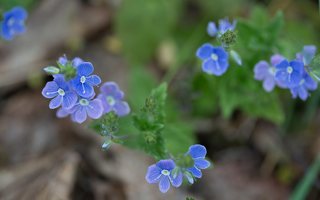- sort orderDefault
Photo title, A → Z
Photo title, Z → A
✔ Date created, new → old
Date created, old → new
Date posted, new → old
Date posted, old → new
Visits, high → low
Random - Google Map
- map
 home / Plantae · augalai / Plantaginaceae · gyslotiniai / Veronica chamaedrys · paprastoji veronika
home / Plantae · augalai / Plantaginaceae · gyslotiniai / Veronica chamaedrys · paprastoji veronika

-
 Veronica chamaedrys · paprastoji veronika
Veronica chamaedrys · paprastoji veronika
-
 Veronica chamaedrys · paprastoji veronika
Veronica chamaedrys · paprastoji veronika
-
 Veronica chamaedrys · paprastoji veronika
Veronica chamaedrys · paprastoji veronika
-
 Veronica chamaedrys · paprastoji veronika
Veronica chamaedrys · paprastoji veronika
-
 Veronica chamaedrys · paprastoji veronika
Veronica chamaedrys · paprastoji veronika
-
 Veronica chamaedrys · paprastoji veronika
Veronica chamaedrys · paprastoji veronika
-
 Veronica chamaedrys · paprastoji veronika
Veronica chamaedrys · paprastoji veronika
-
 Veronica chamaedrys · paprastoji veronika
Veronica chamaedrys · paprastoji veronika
-
 Veronica chamaedrys · paprastoji veronika
Veronica chamaedrys · paprastoji veronika
-
 Veronica chamaedrys · paprastoji veronika
Veronica chamaedrys · paprastoji veronika
-
 Veronica chamaedrys · paprastoji veronika
Veronica chamaedrys · paprastoji veronika
-
 Veronica chamaedrys · paprastoji veronika
Veronica chamaedrys · paprastoji veronika
-
 Veronica chamaedrys · paprastoji veronika
Veronica chamaedrys · paprastoji veronika
-
 Veronica chamaedrys · paprastoji veronika
Veronica chamaedrys · paprastoji veronika
-
 Veronica chamaedrys · paprastoji veronika
Veronica chamaedrys · paprastoji veronika
Veronica chamaedrys · paprastoji veronika
- germander speedwell, bird's-eye speedwell, cat's eyes
- Gamander-Ehrenpreis
- paprastoji veronika
- birztalas veronika
- przetacznik ożankowy
This species is native to Europe. It is found on other continents as an introduced species. Veronica chamaedrys can grow to 20 cm tall, but is frequently shorter, with stems that are hairy only along two opposite sides. The leaves are in opposite pairs, triangular and crenate, sessile or with short petioles. The flowers are deep blue with a zygomorphic (bilaterally symmetrical) four-lobed corolla, 8–12 mm wide. The capsules are wider than they are long. The blossoms of this plant wilt very quickly upon picking.
Veronica chamaedrys is a common, hardy turf so-called weed when it invades turf and lawns. It creeps along the ground, spreading by sending down roots at the stem nodes. It is propagated both by seed and stem fragments. Leaves may defoliate in the summer and winter but the stems will grow again next season.
Daugiametis, 10-25 (40) cm aukščio žolinis augalas. Stiebai statūs arba kylantys, dažniausiai nešakoti, su dviem išilginėmis plaukelių eilėmis priešinguose šonuose; sudaro sąžalynus. Lapai bekočiai arba su labai trumpais kotais, priešiniai, nusmailėję, karbuotai dantyti, viršutinė pusė plika, apatinė plaukuota. Lapų pažastyse išauga ilgos retažiedės kekės su trumpomis, žiedkočio ilgio, pažiedėmis. Taurelė iš 4 skiltelių, kurių kraštai blakstienoti. Vainikėlis ryškiai mėlynas, retai rožinis arba baltas, su tamsiomis gyslomis, trumpu vamzdeliu ir keturiaskilte atbraila, kurios viršutinė skiltis kiek didesnė už kitas. Kuokeliai 2, ilgakočiai, nukrintantys kartu su vainikėliu. Vaisius – tribriaunė, trikampiškai širdiška, 3-4 mm ilgio ir iki 5 mm pločio, plaukuota, įlengta viršūne dėžutė, kurioje subręsta pailgos, plokščios sėklos. Jas išnešioja vėjas.
Žydi nuo gegužės vidurio iki rugpjūčio pabaigos. Auga pievose, ganyklose, dirvonuose, pakelėse, krūmuose, šviesiuose miškuose, pamiškėse, miško aikštelėse, vidutinio drėgnumo ir derlingumo dirvožemiuose. Lietuvoje labai dažna.